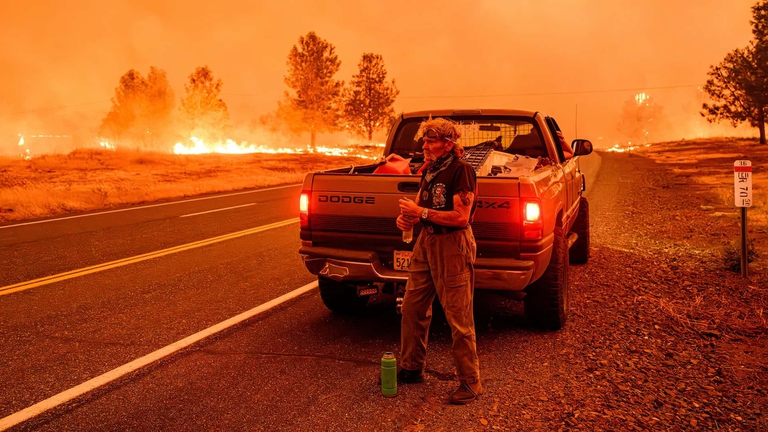https://www.lifegate.it/incendio-park-fire-california-bilancio
- |
The immense fire named “Park Fire”, flared up in California in July, it is still active, although now 99 percent tamed, according to what was reported by the firefighters of the American state (CalFire).In six weeks, the fire was able to destroy 173,850 hectares of forests and vegetation.Which makes it the fourth most serious in California history (and the worst of the current year).
The Park Fire destroyed 709 homes and commercial structures
The Park Fire was concentrated in the Butte and Tehama counties.To limit it, the intervention of 477 firefighters, a helicopter, dozens of vehicles, and consequent gigantic costs, estimated at 337 million dollars.
Nonetheless, the flames destroyed 709 homes and commercial structures, damaging another 54, according to a still provisional estimate.But fortunately the area in which the fire broke out and the measures adopted by the authorities made it possible to avoid any victims.
Smoke from the fire reached as far as Reno, Nevada
THE environmental and material damage, on the contrary, are enormous.The Park Fire burned most of the ecological preserve Big Chico Creek, which extended over 3,200 hectares, and which was used for educational and scientific research purposes.The smoke caused by the burning of trees and vegetation has also significantly degraded the air, with repercussions up to the city of Reno, in Nevada.
They were then destroyed electrical infrastructure, including switchboards and lines, leaving thousands of people without power for weeks.It was also necessary to carry out a series of evacuations, not only in Butte and Tehama counties but also, as a precaution, in that of Shasta.As of July 25, US authorities had reported more than eight thousand people forced to abandon their homes, including the entire village of Cohasset.Along with the residents, many were also displaced animals large and small in size.

A summer of extreme phenomena in California
But for California it was about a summer made of extreme episodes not just for fires.The drought did not spare the American state, and in the first days of September the mercury columns indicate extraordinarily high data.45 degrees Celsius are expected in some Los Angeles neighborhoods next weekend.On average, meteorologists predict temperatures 10 degrees higher than the average for the period.In the Death Valley, known for extreme temperatures, will touch each other 50 degrees, and also the neighbor Arizona will be hit by the heat wave:to Phoenix temperatures have already reached 40 degrees.
On the other hand, extreme heat waves represent one of the consequences of climate changes in progress:in the United States, in particular, the Environmental Protection Agency analyzed data from 50 major cities, establishing that the frequency of such waves is tripled compared to the Sixties, going from two to six episodes per year.Which also requires a different way of conceiving the protection of the territory, as Don Hankins suggests, researcher at the University of California, according to which some practices of indigenous communities could be effective in prevent fires.
